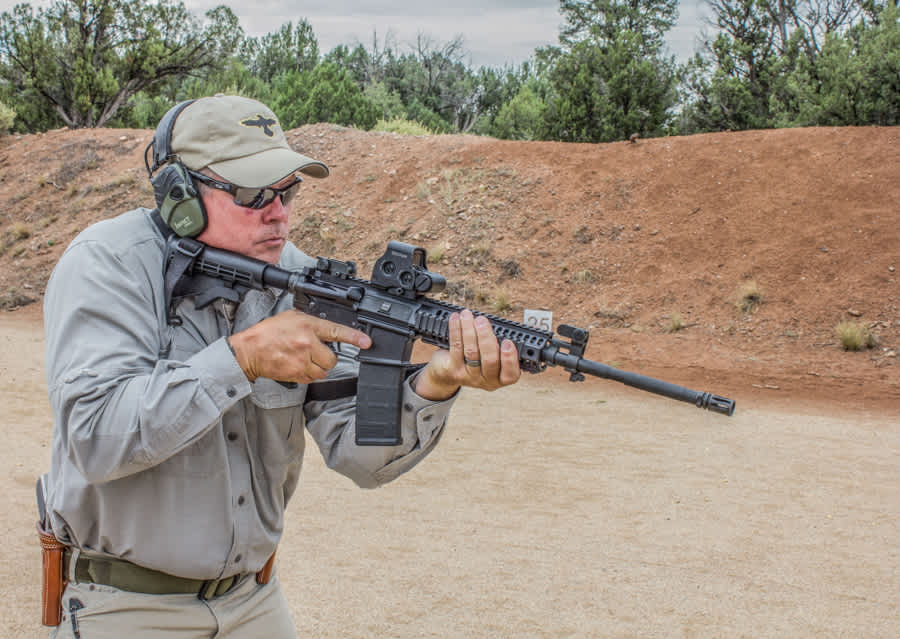Shooting with the Mann: Gas vs. Piston ARs
Richard Mann 12.12.16

The original AR, as designed by Eugene Stoner, functions on the gas impingement system. With this system, as the bullet travels down the barrel, it passes a hole in the top of the barrel and some of the gas pushing the bullet is diverted through this hole. The gas is then directed back through a tube and into the upper receiver, where it pushes against the gas key on top of the bolt carrier. This pushes the bolt carrier back and cycles the action.
There are two complaints with this system. The first is that this dispersion of hot gas into the receiver heats up the operating components. This theoretically causes additional wear. The heat also bakes carbon residue onto the bolt and bolt carrier, which results in the second complaint, fouling. Some correlate the gas impingement operating system to a person who poops on the same table they eat off of – not a pleasant thought.

One of the most reliable battle rifles is the AK 47. Like the AR, the AK runs on gas, but the AK uses the gas to drive an operating rod. This rod essentially does what the gas in an AR does and pushes the bolt carrier to the rear, cycling the action. The gas is then vented to the outside and never enters the action. This led some designers to consider making a piston driven AR.
With a piston driven AR, when the gas enters the gas block, it is used to force a piston or rod back against the gas key. On a piston driven AR, this gas key doesn’t have a hole in it. Instead, it’s just a solid block for the piston to pound against. All the gas is expunged from the system, so the internals stay very clean and cool. On the negative side, the bolt carrier inside an AR wasn’t designed to be pounded on with a steel rod. Theoretically, this induces more wear. Some piston driven ARs cost twice as much as gas impingement ARs, so maybe the real question is if they are worth the money?

Ultimately, it’s a call only you can make. As someone who tests and reviews guns for a variety of firearms periodicals, I’ve had the opportunity to test many varieties of gas impingement and piston driven ARs. Based on those tests, here are the facts as I see them:
- Piston driven guns run much cleaner.
- Piston driven guns run much cooler.
- On average, piston driven guns are very slightly less accurate.
- On average, piston driven guns cost more.
- Both piston driven and gas impingement guns are very reliable.
- Parts for gas impingement guns are easier to find and cost less.

Editor’s note: This article is a condensed version of a chapter in Richard Mann’s book, The Gun Digest Shooter’s Guide to the AR-15.

